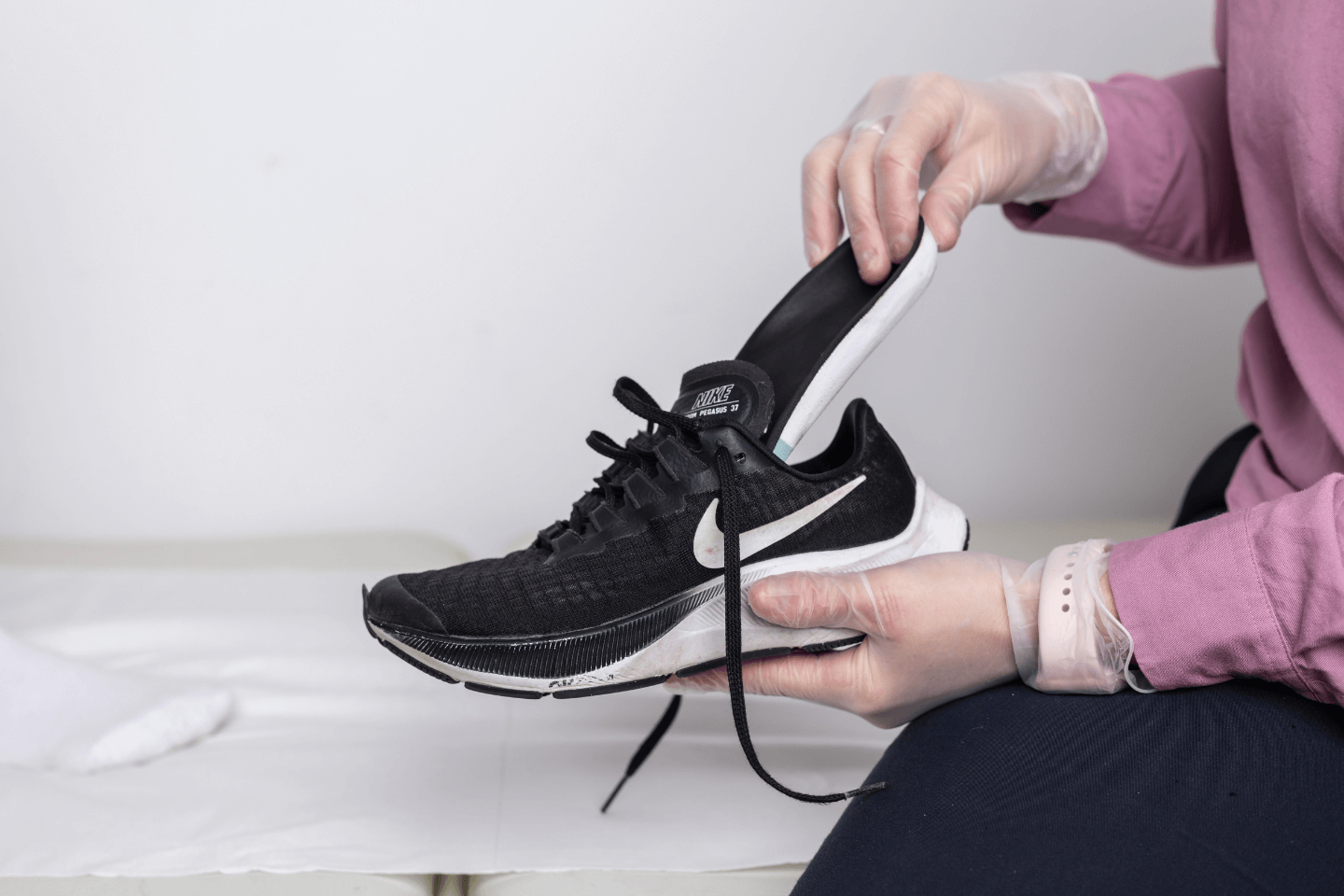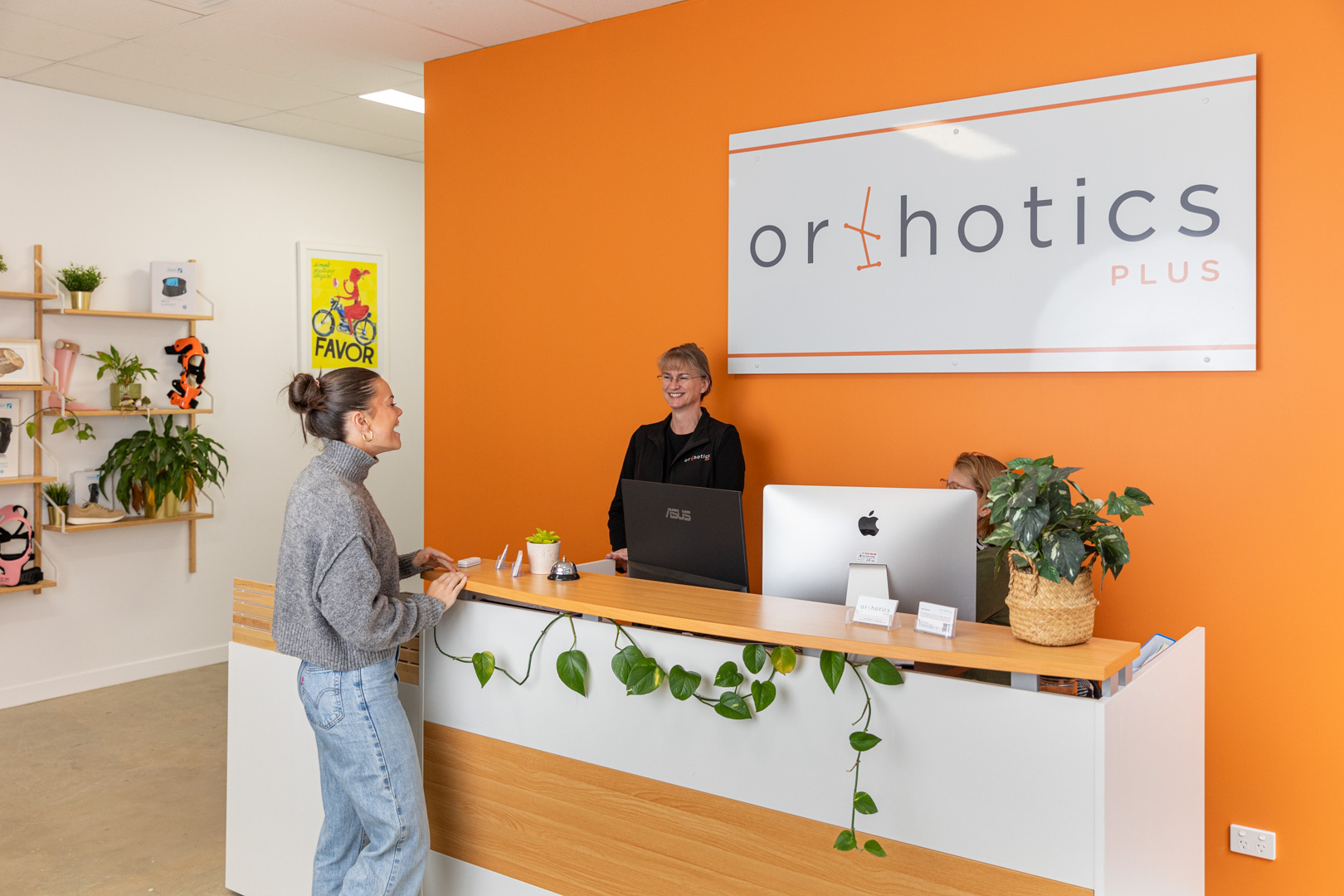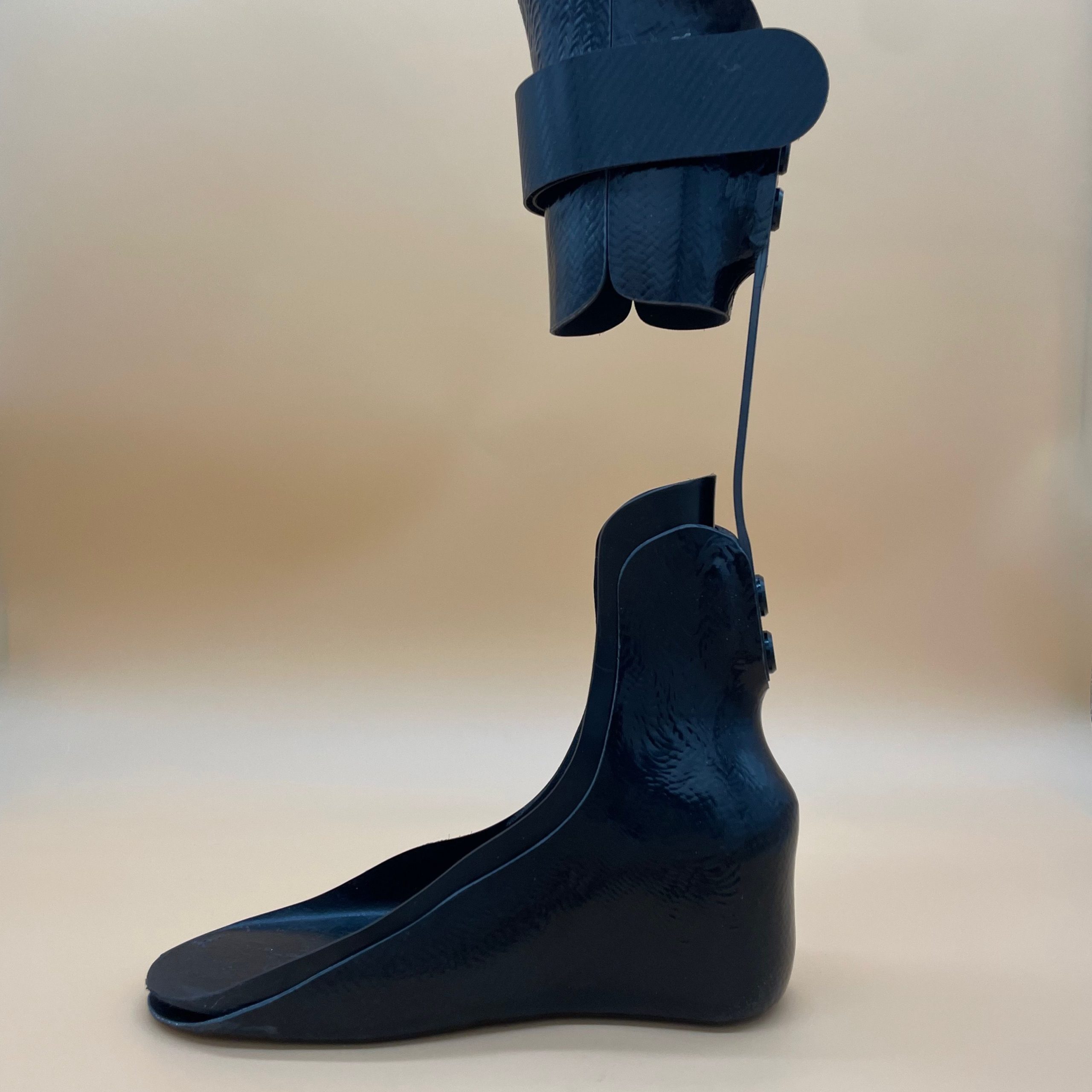An Orthotist’s Considerations when Reviewing AFOs
When reviewing an existing AFO for a patient, we always consider the patient’s wants and needs.
There are many situations where the previous AFO is functioning very well and is an appropriate prescription so will be replicated so that it is nearly identical to the previous device.

We may also consider:
- The weight of the brace and whether weight reduction is required to support their disability
- Cosmetics – people have different goals and may wish for the AFO to fit into formal footwear, for example
- The functional outcomes of the brace, for example, one that is suitable for jogging and exercise compared with an everyday model
- Lastly, we take into account funding, as we want to provide the best solution taking into account the patient’s financial preferences.
When Should New AFOs be Reviewed?

The frequency of reviews for an AFO (ankle-foot orthosis) can vary based on individual needs, the type of AFO, and changes in the patient’s condition. Our general guidelines are as follows:
- Initial Reviews: After fitting, the first review should occur within 1-2 weeks to assess fit and function.
- Follow-Up Reviews: Following the initial assessment, reviews may be scheduled every 2-4 weeks for the first 2-3 months. During this time, adjustments are made as needed.
- Ongoing Reviews: Once the AFO has been established and is functioning well, annual reviews are typically sufficient or sooner if there are any changes of circumstances.
- NDIS Plan Reviews. NDIS Plan Reviews typically occur every 12, 24 or 36 months (read more here). All Orthotics and healthcare services should be reviewed at this time.
At Orthotics Plus, we understand that it is our role to maintain awareness of the newest technology so our patients can benefit from it.
How Often an Existing AFOs Should be Reviewed?
When fitting AFOs initially, we typically prescribe them based on the individual patient’s needs.

Depending on the patient, the first review could be one to three weeks after the fitting.
If everything is okay, the review can be extended to two to three months. However, if there are concerns, we would schedule a one to three-week review.

After the initial review, we typically review the AFO every 6 to 12 months, but this can vary depending on the patient’s condition.
Some conditions change rapidly, and adjustments may need to be made more frequently, especially if the patient is undergoing simultaneous treatment such as Physiotherapy.
In these cases, communication with the treating physio is important so that we can adjust the AFO as needed.
Example
One example of when a physio might give feedback to an Orthotist about an AFO is if the patient’s calf range of motion has increased. Physiotherapy can increase range of motion, muscle strength and flexibility.

If the patient’s calf range of motion has changed, the AFO may need to be adjusted or remade to accommodate the new range of motion.

Additionally, the AFO may need to be made looser or tighter to ensure it is providing the correct level of support and stability if the patient has gained or lost mass.
NDIS Plan Reviews
In addition, people with NDIS plans often have plan reviews which are typically either at the 12, 24 or 36-month mark, at which time, their supports in place are reviewed, including any forms of assistive technology.
Reviewing and Implementing New Care Plans for AFO Wearers
An Orthotist would review a person’s care plan, such as an NDIS plan or homecare package, to ensure that the patient’s orthotic needs are adequately covered.

The care plan would be reviewed to determine the level of funding available for orthotic equipment and services, such as AFOs, foot orthotics, and ongoing care and maintenance. This includes justification for
- New AFO funding
- The use of certain materials and fabrication techniques (i.e. thermoforming)
- Time for casting, fitting, modifications, reviews
- Appropriate supportive footwear that may be required
- Comparisons against other equipment
- Warranties
The Orthotist would also consider the patient’s specific needs and goals when reviewing the care plan.
How Does Funding Affect the AFO Prescription?
Funding options, such as those provided by the NDIS, do influence AFO prescription.
Ensuring that the cost of a brace does not limit patient access is a priority for Orthotics Plus – we commit to assisting patients in securing funding.

If a patient is privately funding their AFO, we can have a device made generally within 1-4 weeks depending on componentry and materials.
If you are having your device funded by a 3rd party such as TAC or the NDIS the approval process is a varied timeline. Ideally, it would be 4 weeks from application to funding however can be much longer. This delay is out of our control.
If a patient needs a brace now, however, we will communicate this urgency to the the funding body.
Various funding scenarios can arise. For instance, a patient may initially be informed they have $1,000 allocated for an AFO, only to discover that the actual cost is $2,500 (this is just an example). In such cases, justifications for additional funding would be submitted to the NDIS.
Additionally, a patient might have no funding for an AFO if it was not deemed necessary during their last plan review. In these instances, an application for a change of circumstance can be submitted to secure the required funding in their next plan.

For example, if the patient has a degenerative condition that will require additional adjustments to their orthotic devices, the Orthotist would ensure that the care plan provides adequate funding for extra maintenance.

It is important to note, that Orthotics Plus believes in choice and control, in this case, we would quote for the above services, however, should the patient move interstate or decide to use an alternative Orthotist, they could use their newly requested funding elsewhere.
Advancements in AFO Technology
Orthotics Plus has witnessed significant advancements in the technology of AFOs over the recent past.
These advancements are primarily driven by the increase in funding and the willingness of companies to invest in creating updated solutions.

Use of Joints
Traditionally, AFOs were made of metal and leather, which have now been replaced by plastics and carbon fibre.
The use of different joint types has become more common, from standard Tamarack joints to double and triple-action ankle joints that allow a more natural gait and the range of motion to be adjusted without requiring a new AFO for the patient’s progress.
Pre-Preg

Pre-preg has also emerged as a stronger, lighter, and thinner way of fabricating AFOs.
Pre-preg refers to a composite material that is used for fabricating orthotic devices such as AFOs. Pre-preg is short for pre-impregnated fibres, which means that the fibers are already pre-saturated with resin before they are used to fabricate the orthotic device.
This results in a material that is stronger, lighter and thinner than older materials used for AFOs.
Posterior Dynamic Element Struts
One of the most notable advancements is the use of posterior dynamic element struts that come in different flexibilities, allowing patients to have more control over the function of their AFO.

The posterior dynamic element (PDE) strut offers the benefit of adjustability, allowing for the fine-tuning of the prescription as the patient’s needs change. For instance, if the patient’s weight or function changes, they may require a stiffer strut, which can be easily swapped out without replacing the entire AFO.
This modularity makes the PDE strut a more efficient option compared to traditional AFOs where changing the rigidity requires starting the fabrication process again from scratch. This can be cost-effective and convenient for people.

Alternative Advanced Technology
Furthermore, FES systems have emerged that adopt much of the function of an AFO and allow patients to solve their foot drop without having any plastic structure in their shoe or touching their foot or ankle.
If you are still using a solid plastic AFO or a plastic AFO with Tamarack joints, it is highly likely that there are better options available for you, including the ones mentioned above.

Comparing Current AFOs with New Prescriptions
The phrase “you don’t know what you don’t know” accurately sums up the concept being discussed.
If someone is using plastic, basic jointed, or solid AFO, there are likely better options available, though an assessment is necessary to determine the best solution.

Patients can try different varieties in a clinic, however, for those with spasticity, equinovarus, or a presentation that doesn’t fit an off-the-shelf product, a custom device is necessary.
Upgrading to a modern AFO with modern features can improve walking and promote function, making patients more comfortable and allowing them to wear alternative footwear. This can also reduce aches and pains, improve walking patterns, and reduce fatigue, allowing patients to spend more time engaging in activities.
These improvements can have a significant impact on a patient’s quality of life.

Contact Orthotics Plus for an Assessment Today
Orthotics Plus has proudly serviced the Melbourne community for over a decade.
- We have multiple clinic locations
- We are NDIS registered
- We are university-trained, highly experienced clinicians
- We help you achieve your goals
To get started, or to book a review of your current AFO, please use our clinic locations page to make contact.